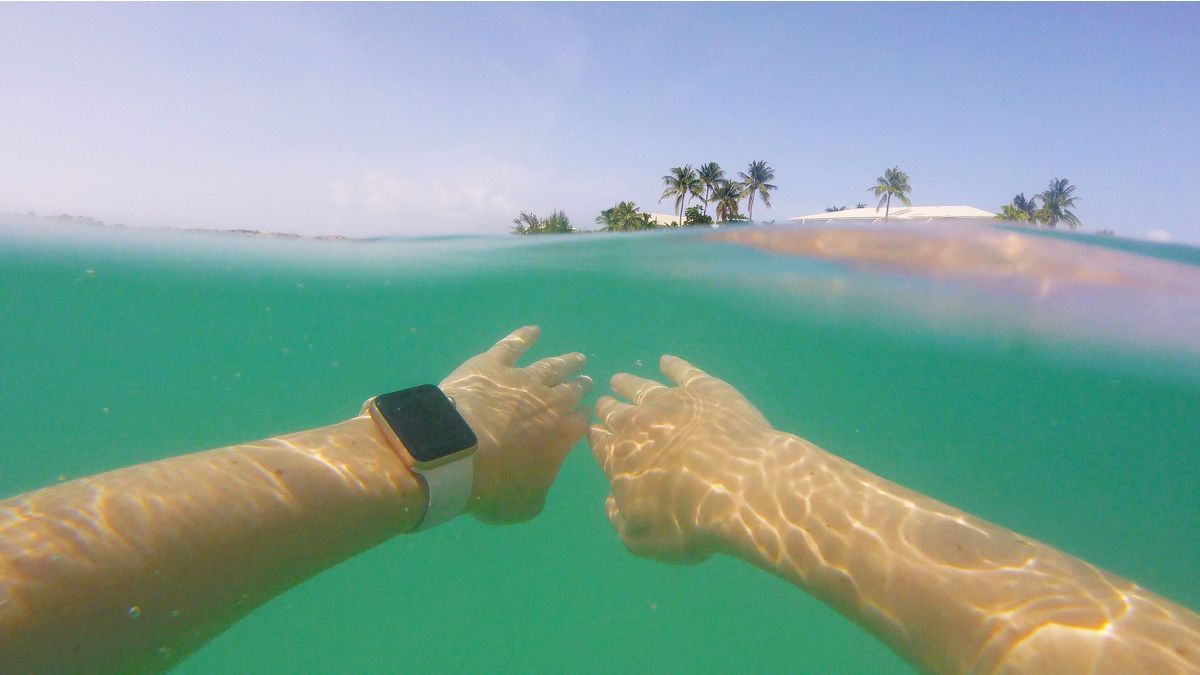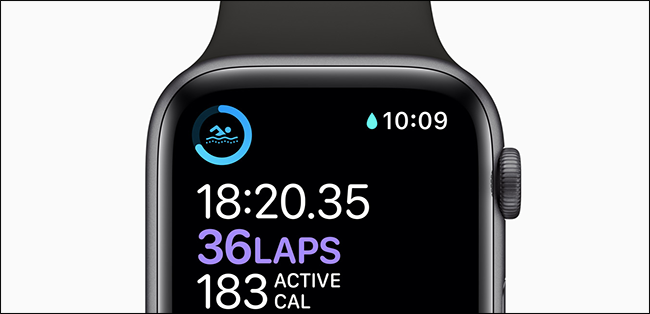Quick Links
Just like the iPhone, Apple Watches are water-resistant, but not waterproof. Let's look at what it's safe to do while wearing your watch, and which watery activities you should avoid.
Apple Watch Water Resistance
The Apple Watch Series One has a water resistance rating of IPX7. This means it's splash-proof and should survive a fall into water of up to three feet deep. Leaving it submerged, however, isn't recommended. If you still have a Series One, taking it swimming with you isn't the best idea, but the sweat from your workout or a bit of rain won't harm it.
The Apple Watch Series Two and newer are explicitly designed to be worn in water to track swimming workouts. Instead of the IP standard, they use ISO 22810:2010, which is the watch industry's standard for water-resistant and waterproof watches. Under this standard, they're rated up to about 150 feet (or 50 meters), or five atmospheres of pressure.
It's worth noting that while your Apple Watch is resistant to water, the band might not be. The following official Apple bands aren't water-resistant:
- Classic Buckle
- Leather Loop
- Modern Buckle
- Milanese
- Link Bracelet
The following bands are water-resistant:
- Sport Band
- Sport Loop
- Nike Sport Band
- Nike Sport Loop
Shallow Water Is Okay
So, what does all of this mean for you and your Apple Watch?
If you have a Series One, shallow water is okay to fall into, but you shouldn't wear your watch for an open-water swim. It would probably be okay, but it's not designed to withstand that.
If you have a Series Two or newer, swimming in shallow water in a pool, or even the ocean, is totally fine. Whenever you start a swimming workout, your Apple Watch will automatically lock the screen so it won't respond to random phantom taps from the water.
To unlock it when you're back on dry land, just turn the digital crown. It will expel any water inside through the speakers.
Deep and Dynamic Problems
While the Apple Watch Series Two and newer are rated to around 150 feet, that doesn't mean you can safely use them at that depth. Rather, the seals have been tested at the pressure equivalent to 150 feet (five atmospheres) in static water. However, it's easy to exceed that pressure even in shallow water if you fall over while waterskiing or wipe out while surfing.
So, even though a recent Apple Watch is theoretically capable of surviving at scuba depths, it almost certainly won't in practice. Likewise, if you're planning to do anything fast, hard, or dramatic in the water, it's best to leave your watch on dry land.
Even cannonballing from a height into the deep end of a pool could be enough to damage your Apple Watch.
Wash After Use
The seals on an Apple Watch aren't designed to resist corrosion or chemicals. After a swim, whether in a pool or the sea, you should wash your watch with clean water.
Also, while you can wear a Series Two or newer in the shower, some of the chemicals in shampoos, soaps, and body washes can damage the seals. Wash your Apple Watch right away if you get any of these substances on it.
Hot Water and Steam Can Also Cause Problems
Similarly, Apple Watches are really only rated for temperate water. The hot water in a Jacuzzi or the steam in a sauna can also damage the seals. It's best not to wear your Apple Watch on a spa day.
Water-Resistance Deteriorates Over Time
Your Apple Watch's water resistance isn't permanent. The seals and gaskets that keep water out break down over time, and they can't be repaired or replaced. An older Apple Watch might not survive in the same situations a brand-new one can handle.
Exposing your Apple Watch to things like hot water, solvents, or high pressure, can wear down the seals, even if it doesn't break them at the time.
Water-Resistant, But Not Waterproof
All Apple Watches are reasonably water-resistant. As long as you aren't regularly waterskiing or scuba diving with it on, you don't have to remove your Watch every time it might get a bit wet.
Just be sensible---and don't dive straight into the deep end.


